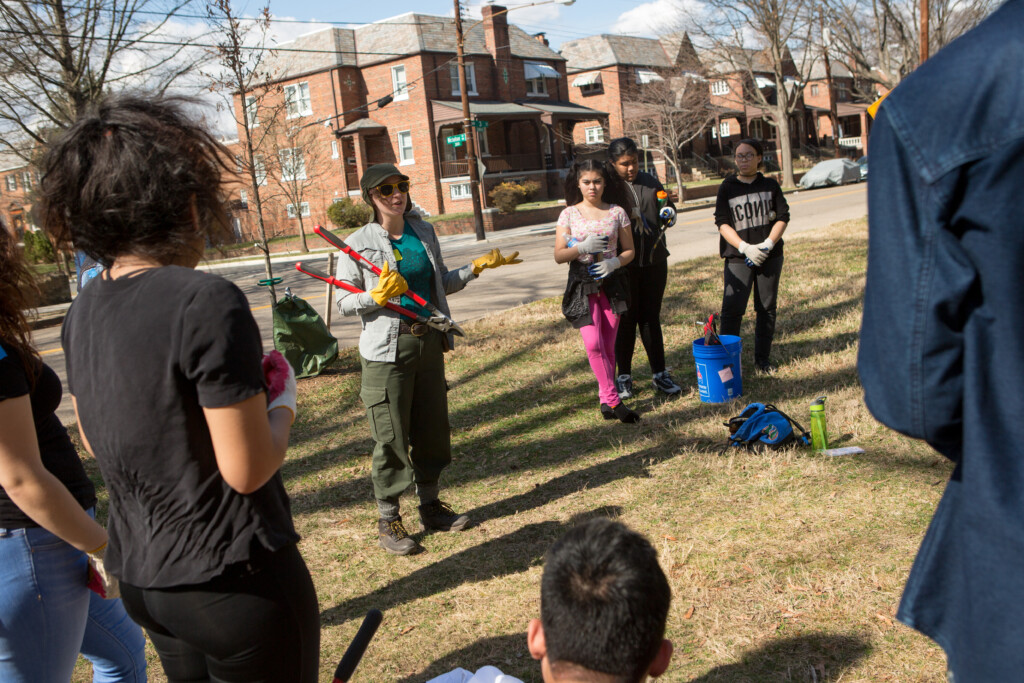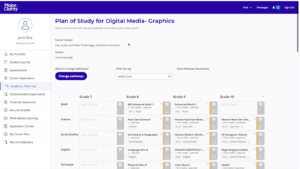The Secret Sauce to a Successful College and Career Readiness Program
Key Points
-
The joint efforts of the whole community – schools, families, local businesses, and local higher education institutions – working collaboratively to assist students with their future endeavors will help lead our students to a path of post-secondary success.
-
We all need to be invested in helping prepare students for their future – and it is ideal when all parties collaborate together to ensure the next generation’s future success.

By: Matt McQuillen
An integral part of K-12 education is preparing students to shape their own lives beyond high school, whether they choose college, technical school, or the workforce. And while there is no single recipe for this, there just might be a secret sauce.
The State of College and Career Readiness in K–12: 2022 Report, which surveyed 170 K–12 U.S. educators (including 122 teachers, 27 education leaders and administrators, and seven school counselors), revealed a significant factor, or secret sauce, in successful College and Career Readiness Programs (CCR). Eighty-nine percent of the respondents indicated that community involvement was critical to their CCR program.
Who, specifically, needs to make up this involvement? Families, local employers, and local higher education institutions all need to be invested in helping prepare students for their future – and it is ideal when all parties collaborate together to ensure the next generation’s future success.
Businesses Supporting Students: A Synergistic Relationship
It is mutually beneficial when local businesses engage with high school students: businesses can use this relationship as an opportunity to engage and assess potential future employees, and students can use this relationship as an opportunity to gain valuable knowledge of an industry and decide if it is the right fit for them career-wise.
There are many ways companies proactively and creatively work with schools to support students – some businesses coordinate with schools to facilitate industry exposure through summer internship opportunities, and others participate in co-op programs where students work in local businesses for a portion of the school day, to name a few examples. Exposure to these businesses benefits students, whether college-bound, interested in learning a trade or choosing to work immediately after high school. More specifically, many high school students engaged in the Career and Technical Education (CTE) curriculum can see how their experiential learning in the classroom translates to the real world through an internship opportunity or a co-op program. Additionally, college-bound students can envision themselves in the workforce during a summer internship, which may help them solidify their major.
And over the long term, students – through these experiences – also further solidify essential life skills that many schools start teaching as early as middle school, including lessons in:
- Time management
- Self-advocacy
- Workplace skills and attitudes
- Work values
- Career-life balance
- Entrepreneurial skills
- Defining success
- Job interviews
What about under-resourced communities that do not have as much access to a variety of thriving businesses? Schools can connect with organizations such as INROADS to gain pathways to internships for high school students. Another avenue would be to locate companies in the Urban Business Initiatives, who may be willing to work with schools for a co-op program or internship opportunity. There are also many companies such as PWC that have internships for high school students from underrepresented minority groups in the professional services industry.
Local Higher Education Institutions Helping Build the Pipeline
Four-year local institutions and community colleges are also part of the secret sauce and benefit from having incoming, well-prepared students who will thrive and graduate on track towards their future careers.
Because they face ongoing enrollment challenges, many higher education institutions are reaching out to students more often, and directly, than ever through presentations at local high schools and campus visits. According to the National Student Clearinghouse Research Center, postsecondary enrollment remains well below pre-pandemic levels – down by approximately 1.23 million undergraduates, and 1.11 million in total enrollment, as compared with fall 2019.
Families, local employers, and local higher education institutions all need to be invested in helping prepare students for their future – and it is ideal when all parties collaborate together to ensure the next generation’s future success.
Matt McQuillen
Dual enrollment programs are gaining in popularity because they allow students to earn college credits while they are still in high school, and are helpful economically for students because their tuition is generally covered by their local school district. This allows students to earn an associate degree or certification rather inexpensively, and also builds a pipeline of prospective students for the participating colleges. As for students that live in areas that do not have easily available access to local colleges and universities, organizations like QuestBridge offer full scholarships for juniors to participate in a college summer program at institutions like Yale University, Emory University, etc.
Support From Home Cultivates More Positive Outcomes
Furthermore, the report found the secret sauce also contains another ingredient: engaging the student’s family. Districts with higher-rated CCR programs tend to have more commitment from families in the process, indicating the importance of family involvement in positive outcomes. Districts that use CCR software also reported a higher percentage of engaged families.
What are the most effective strategies for districts to engage families? One is to encourage open dialogue, whether through virtual parent meetings, in-person conversations or email exchanges discussing opportunities for students.
Motivating families to discuss future interests with their children is also essential. This may not easily happen organically in family life, so making time for this discussion is a significant first step. Additionally, students who have CCR software and have matched their interests with their career choices can share those results with their parents to aid in the conversation.
Engaging parents and other caregivers are also a perfect time for school districts to tap into larger community networks – perhaps some families are familiar with companies that would be open to co-ops, internships, or job shadowing opportunities for students. Allowing parents to utilize their networks involves them in the process and creates more opportunities for students at the school.
So, the secret sauce? The joint efforts of the whole community: schools, families, local businesses, and local higher education institutions working collaboratively to assist students with their future endeavors and, thus, help guide and lead our students to a path of post-secondary success. We are all in this together.
Matt McQuillen is the CEO and Co-Founder of Xello, the award-winning K-12 college, career, and future readiness program.







0 Comments
Leave a Comment
Your email address will not be published. All fields are required.